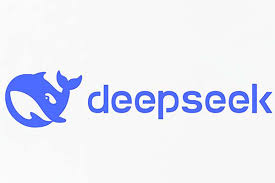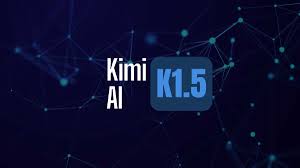China Just Released 4 AI Models That Crush ChatGPT, Gemini, Claude—and They're 100% Free


China's AI Surge: The Four Free Models Changing the Game
In a bold move that's shaking up the global tech landscape, China has launched four advanced AI models that don’t just compete with the likes of ChatGPT, Gemini, and Claude—they outperform them in key areas. And the kicker? They’re all free to use.
Let’s break down each of these cutting-edge models and why they matter.
Qwen 2.5 by Alibaba: All-in-One Powerhouse
Alibaba has entered the AI arms race with Qwen 2.5, a full-stack AI assistant that makes ChatGPT look like a freemium app. Not only does it rival GPT-4 in natural language understanding and generation, but it goes a step further by offering:
Image generation built-in
Live web search capabilities
Advanced coding features
AI video creation—without a paid subscription
While OpenAI locks some of its most advanced features behind a $20/month paywall, Qwen 2.5 gives them away for free. This is a serious game-changer for creators, developers, and everyday users.
Minimax 01: The Largest Context Window in AI History
If there’s one thing that sets Minimax 01 apart, it’s scale. This model boasts a jaw-dropping 4 million token context window—that’s more than 30 times the size of GPT-4 Turbo’s 128K.
To put it in perspective, Minimax can process documents the size of an entire novel or multiple research papers in one go. It also supports file uploads up to 100MB, allowing seamless ingestion of massive datasets, manuals, or multi-file projects. For researchers, lawyers, analysts, and anyone handling deep knowledge work, this is a dream tool.
Kimi 1.5 by Moonshot: Next-Level Reasoning and Math
Moonshot’s Kimi 1.5 is built to tackle the domains most U.S.-based models still struggle with: reasoning, mathematics, and logical consistency. It's trained with a laser focus on solving complex problems and writing reliable, bug-free code.
Early users report that Kimmy 1.5 doesn’t just spit out solutions—it explains them clearly, step by step, making it ideal for technical users, developers, students, and STEM professionals.
If you're tired of ChatGPT guessing its way through tough math or logic puzzles, Kimmy 1.5 is the upgrade you’ve been waiting for.
DeepSeek: Redefining Complex Understanding
Last but not least is DeepSeek, perhaps the most balanced and versatile of the four. Built with enterprise and academic users in mind, DeepSeek is designed to understand and generate complex, nuanced content across a wide range of disciplines.
Its performance rivals GPT-4, but without the access limitations. From long-form reasoning to technical analysis, DeepSeek handles it all with accuracy, speed, and context awareness. Whether you're building a product, writing a paper, or diving into AI development, DeepSeek delivers reliable outputs with zero cost of entry.
Together, these four models are not just innovations—they’re a strategic masterstroke. By unleashing them to the public for free, China is accelerating its influence over the global AI ecosystem, drawing in users, developers, and enterprises from every corner of the world.
Up next, we’ll explore why this open-source-first approach is redefining global AI leadership—and what it means for the future of tech.
Why This Matters: The Global AI Power Shift
The release of these four powerhouse models isn’t just a tech flex—it’s a strategic shift that could redefine who leads the future of artificial intelligence. While American tech giants are focused on monetizing every token and feature, China is playing the long game—and winning.
Here’s why this matters now more than ever:
Open Source vs. Paywalls: Accessibility as a Strategy
In the U.S., access to the most powerful AI models is increasingly locked behind expensive paywalls. OpenAI charges $20/month for GPT-4, Google limits Gemini Ultra to enterprise users, and Anthropic’s Claude 3 Opus isn’t exactly free-flowing for the average user.
Meanwhile, China is flipping that script by releasing fully open and free models that rival or exceed the best American offerings. This isn’t just generosity—it’s a growth strategy. The more people use and build on these tools, the faster the models improve, and the wider the adoption spreads.
By prioritizing access over profit, China is building AI mindshare—and a global developer base—faster than the West.
The Democratization of AI in China
Giving away these tools means more than free software. It’s about democratizing opportunity.
Students, small businesses, researchers in developing countries, independent creators—people who can’t afford $20/month or enterprise contracts—now have access to the most advanced tools on the planet. That’s how ecosystems grow. That’s how you ignite revolutions.
The implications? A broader, more diverse group of people will start using AI to build, solve, teach, and create. And the center of innovation may shift accordingly.
Short-Term Profit vs. Long-Term Dominance
Let’s be real: OpenAI, Google, and Anthropic are running traditional Silicon Valley playbooks—secure funding, build hype, monetize early. But China seems to be playing 4D chess, focused on long-term global dominance, not quarterly revenue.
They’re betting that making AI free and open now will lock in global adoption, data feedback loops, and loyalty for decades to come. Once the world builds on your platform, your influence is permanent.
If this continues, it won’t just be about who has the best model—it’ll be about who owns the ecosystem.
What’s Next: Implications for the Future of AI
The AI race is no longer theoretical—it’s unfolding right now in real time. With China dropping four high-performance, completely free AI models, the question isn’t just whether the U.S. will catch up—it’s whether it can keep up at all.
Here’s what’s on the horizon:
Can American Companies Catch Up?
To stay relevant, American AI companies need to make a massive pivot—from closed ecosystems and paywalls to accessibility, transparency, and community building. The current model is too exclusive, and it’s stifling innovation outside elite enterprise circles.
The good news? It's not too late. OpenAI, Google, and Anthropic still have world-class talent and massive resources. But unless they match or beat the openness of China’s new releases, the momentum shift may become permanent.
Risks and Opportunities for Global Developers
This open-source surge presents both opportunities and challenges for developers worldwide:
✅ Opportunity: With unrestricted access to Quinn, Minimax, Kimmy, and DeepSeek, developers can build, test, and deploy powerful AI applications faster than ever—without burning through budgets.
⚠️ Risk: As the AI arms race accelerates, global dependency on foreign models may raise concerns about data sovereignty, governance, and security. These tools are powerful—but who controls the backend?
For now, the tools are free. But the infrastructure and influence being built may last far longer than the hype cycles.
Whether you're a developer, researcher, content creator, or just an AI enthusiast, get in early. Explore them, experiment with them, and start building.
Because one thing’s for sure: the AI future isn’t coming—it’s already here. And China is setting the pace.








